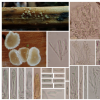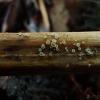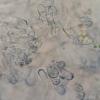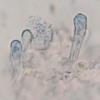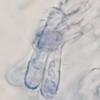
07-12-2025 16:07
Arnold BüschlenHallo, ich habe in einer Moos-Aufsammlung (epiohy

05-12-2025 17:33
 Bruno Coué
Bruno Coué
Bonjour, je serais heureux de recueillir votre avi

07-12-2025 09:24
De la pasada semana en Galicia EspañaEn el suelo

06-12-2025 00:19
 Viktorie Halasu
Viktorie Halasu
Hello, would anyone have this article, please? An

02-12-2025 18:59
This pair of ascos 2.5cm across were on recently b
apo on Pteridium aquilinum
Bohan Jia,
30-07-2025 20:52
Hi together,
I've been looking posts in AscoFrance for quite a few times and this is my first post here needing help with a discomycete.
So today I found some apothecia growing on Pteridium aquilinum stem. I can't figure out what they are and I've already looked after Psilachnum species. With the key C2 of the Ascomycetenproject I came to Pezizella. But I couldn't find any matching species there as well. Could anyone help with identifying? Thanks!
https://www.inaturalist.org/observations/302299873
apothecia 100-440 micrometers
asci:
34.9 [34.9 ; 45.3] 45.7 × 5.3 [5.4 ; 6.9] 7.1 ?m
Q = 5.2 [5.4 ; 8.0] 8.1 ; N = 9 ; C = 95%
Me = 38.6 × 6.3 ?m ; Qe = 5.9
paraphyses:
27.2 [27.6 ; 37.1] 37.3 × 2.2 [2.2 ; 2.7] 2.7 ?m
Q = 10.1 [10.6 ; 15.9] 16.6 ; N = 8 ; C = 95%
Me = 31.3 × 2.4 ?m ; Qe = 12.8
spores:
6.7 [7.2 ; 10.4] 12.3 × 1.8 [1.9 ; 2.8] 2.9 ?m
Q = 3.3 [3.4 ; 4.5] 5.1 ; N = 16 ; C = 95%
Me = 9.4 × 2.3 ?m ; Qe = 4.0
Bohan Jia,
30-07-2025 20:57
Bohan Jia,
30-07-2025 21:38
Re : apo on Pteridium aquilinum
I realized that I've ignored the granulose surface of the hairs which strongly supports Cistella. So on Pteridium it's going to be Cistella pteridialis :)
Kosonen Timo,
30-07-2025 22:14

Re : apo on Pteridium aquilinum
Hello,
I failed to notice other than relatively smooth and somewhat thick-walled hairs. Do you have a close-up on hairs in water (fresh) and maybe for comparison in CR or similar to pick a possible change in hair vesture? (I dont know C. pteridialis, but not suggesting anything else either).
bw
Timo
I failed to notice other than relatively smooth and somewhat thick-walled hairs. Do you have a close-up on hairs in water (fresh) and maybe for comparison in CR or similar to pick a possible change in hair vesture? (I dont know C. pteridialis, but not suggesting anything else either).
bw
Timo
Stip Helleman,
30-07-2025 22:59

Re : apo on Pteridium aquilinum
Hi Jia,
welcome to the forum.
It is not so easy, there are more Cistella species that occur on Pteridium. As Timo mentioned the hair vesture should be looked at more thorough, preferably 1000× oil immersion. Heated Cotton blue could also give a good view. Together with dimensions
Generally your find fits to my idea of C. pteridialis which is not a valid combination of Dasyscyphus pteridialis Graddon.
best Stip
Hans-Otto Baral,
31-07-2025 09:01

Re : apo on Pteridium aquilinum
Good docu! But I want to say a word on measurements:
- Paraphysis length is impossible to define, better is to measure the size of the individual cells, especially terminal cell.
- Are your ascus measurements restricted on mature living asci? When including immature stages of dead asci the use of these data for comparison is much reduced.
Bohan Jia,
31-07-2025 12:47
Re : apo on Pteridium aquilinum
Hi,
I have now taken photos of the hairs through 100x objective and coloured them in lactose cotton blue. Furthermore I also conducted the dimension measurement:
15.5 [22.1 ; 30.4] 35.9 × 2.9 [3.7 ; 4.4] 5.0 ?m
Q = 4.8 [5.2 ; 7.6] 9.0 ; N = 18 ; C = 95%
Me = 25.2 × 4.0 ?m ; Qe = 6.4
Q = 4.8 [5.2 ; 7.6] 9.0 ; N = 18 ; C = 95%
Me = 25.2 × 4.0 ?m ; Qe = 6.4
Best wishes
Bohan Jia,
31-07-2025 12:52
Re : apo on Pteridium aquilinum
Hi Zotto,
Thanks for the tips. Usually I try to measure mature asci (asci which already produced well differentiated spores) only, when there are a large amount of them. But in this case there weren't many mature asci so I included some immature one.
I suppose the most asci I measure are living one as I don't pretreat them with KOH when I measure.
Hans-Otto Baral,
31-07-2025 15:44

Re : apo on Pteridium aquilinum
O.k. Using water is no guarantee for living asci, simple pressure kills them. On your collage the mature ascus is alive, the immature ones in water possibly also. I found the spread from 5.3-7.1 a bit much though not impossible.
Stip Helleman,
01-08-2025 23:54

Re : apo on Pteridium aquilinum
Hi Jia
your hair vesture does not look like typical Cistella spines, more the plate like crust from Ciliolarina but these are restricted to Conifereous substrate. I have no better idea than C. pteridialis, (I see I have observed also almost non-spinulose hairs that are firm-walled, the spines are CB-positive[sub. verrucotricha] ).
Personally I would file this collection as aff. pteridialis.
cheers,
Stip
Kosonen Timo,
03-08-2025 08:26

Re : apo on Pteridium aquilinum
Hi,
No good idea for generic placement, but most likely not Cistella sensu type C. dentata. Ciliolarina is restricted to conifers as presently understood. It's interesting with spore plants as substratum. In Hamatocanthoscypha (related to Ciliolarina) species on wood and on spore plants are apparently (phylogenetically) closely related and very much congeneric and then in, e.g., Psilachnum that is not always the case. Anyway, I am unsure on the "general - broader" placement (Pezizellaceae - Hamatos - Hyaloscyphaceae ...) I'd be just guessing. A specimen to keep.
Timo
No good idea for generic placement, but most likely not Cistella sensu type C. dentata. Ciliolarina is restricted to conifers as presently understood. It's interesting with spore plants as substratum. In Hamatocanthoscypha (related to Ciliolarina) species on wood and on spore plants are apparently (phylogenetically) closely related and very much congeneric and then in, e.g., Psilachnum that is not always the case. Anyway, I am unsure on the "general - broader" placement (Pezizellaceae - Hamatos - Hyaloscyphaceae ...) I'd be just guessing. A specimen to keep.
Timo
Bohan Jia,
03-08-2025 12:21
Re : apo on Pteridium aquilinum
Hi together,
okay, this sounds very interesting. I will keep them for further studies and seqencing when possible. :)
Best Wishes
Bohan

